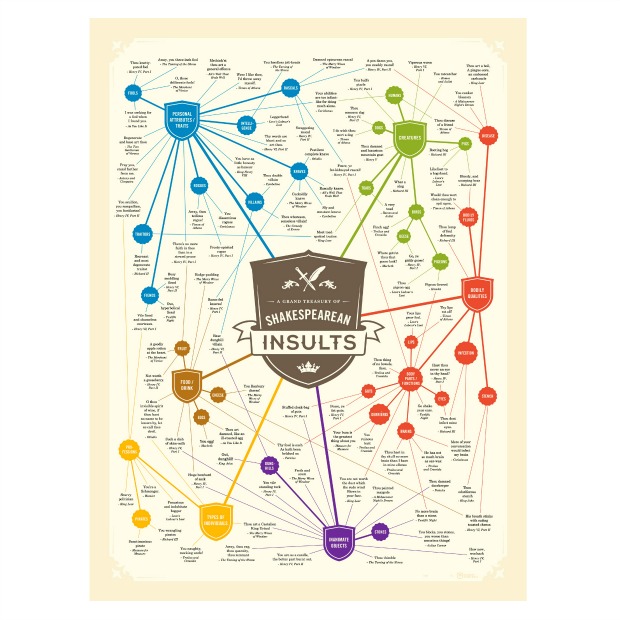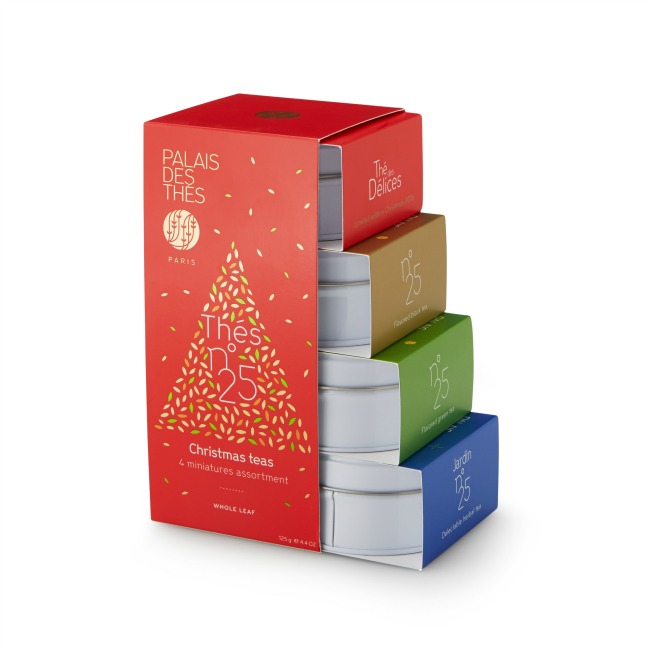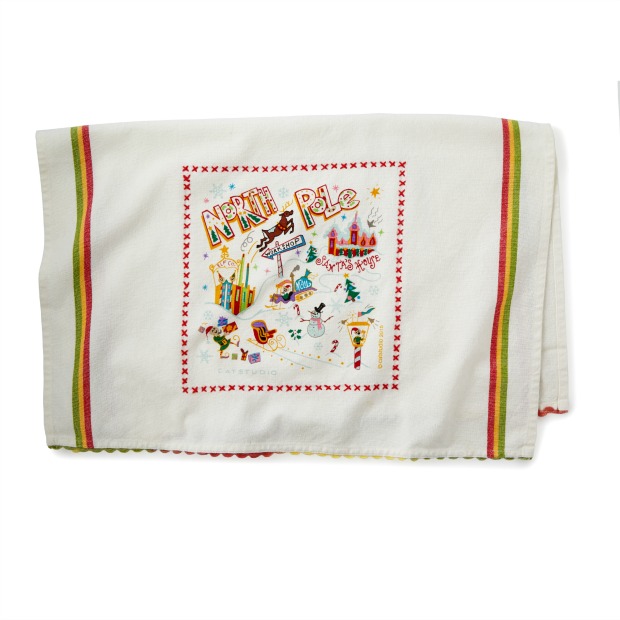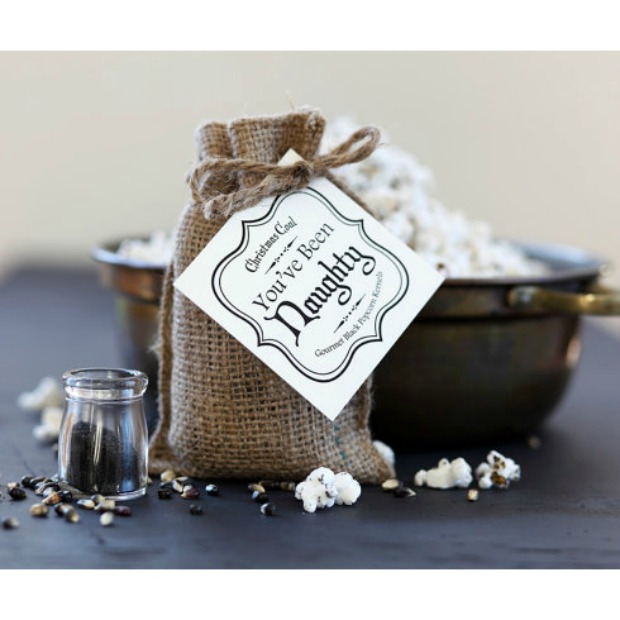It seems that the holiday season gets longer every year—commercially, at least—so it’s kind of ironic that the traditions spanning the season once lasted for twelve days. Once, that seemed like a long time. Now, it’s just a portion of the holiday pie that’s served up the day after Halloween and lasts straight through the January sales. So to honor the ancient traditions of the twelve days while you ponder the perfect gift for your Uncle Ralph, we offer this gift of a dozen uncommon facts about this festive season.
1) First, about those twelve days of Christmas. Thanks to the popular carol, many people today think it’s about wooing your true love with a stage full of performers, barnyard animals, and five gold rings. Actually, both “twelve days” and “Christmas” are misleading for two reasons: first, if you count from Christmas Eve to Twelfth Night, it’s really a full two weeks on the calendar, and second, those two weeks encompass observances well beyond the birth of Jesus in Bethlehem. The twelve days include delightful, archaic holidays such as Boxing Day, Mother Night, St. Distaff’s Day, and the Feast of Fools, so there’s more packed into “the holidays” than you might expect.
2) Of the colorful highlights of the twelve days now largely lost to history, the Feast of Fools may be most ripe for a revival. Like a combination of April Fool’s Day and Mardi Gras, this fourth day of Christmas was hugely popular in the middle ages as a rare opportunity to party down, despite the Church’s constant condemnation of the occasion. This popular feast day was marked by topsy-turvy social role-playing, colorful mumming, and raucous revelry of every kind. Sound good? Who wouldn’t want to blow off some steam a few days after our contemporary Christmas craziness?
3) The sixth day of Christmas—New Year’s Eve—might be considered first in significance in Scotland. There, it’s traditionally known as Hogmanay, a possible corruption of the French au guis menez (“to the mistletoe,” suggesting a Druidic origin). But whatever its name or origins, the celebration is essentially the same to this day—drinking toasts to the old year, counting down to the new, and tying on a few more after midnight. But a wonderful part of Scottish Hogmanay called “First Footing” is less common. In this ritual, the first person to put their foot across a threshold has the honor of bringing good fortune to the whole household. Sometimes, this metaphor for stepping through the door of a new year was accompanied by a handsel, a gift of a lump of coal or a bottle of whisky (no e in Scotland) to symbolize the many gifts of the coming year. Warmth…whisky…who needs a Christmas sweater?
 A Grand Treasury of Shakespearean Insults
A Grand Treasury of Shakespearean Insults
4) Traditionally, the end of the twelve days on Twelfth Night was marked by the unpopular task of taking down Christmas decor—packing away permanent ornaments, and disposing of natural ones like evergreen boughs and holly. It was once considered bad luck not to do so by Twelfth Night (we’re looking at you, guy who keeps all his lights up until Valentine’s Day). Seventeenth century poet Robert Herrick asserted that failure to make a clean sweep on Twelfth Night could turn every spine on the holly into a malevolent goblin. But Twelfth Night was not just a warm up to spring cleaning, it came with its own festive traditions like a special Twelfth Night cake. A bean was baked into the cake, and whoever found it in his or her slice was crowned king or queen of Twelfth Night, leading the gathering in songs and games. Twelfth Night, one of Shakespeare’s cross-dressing comedies, was written as an elaborate court entertainment for the season’s-end festivities.
5) So how do we end up with so much greenery to dispose of at that end of the season? Since ancient times, evergreen plants like holly, ivy, and various conifers have been associated with the persistence of life through the cold and dark of winter. Originally, the power of these plants to resist seasonal die-off was seen as magical, so bringing them indoors as decorations was a way to capture some of that vitality during the winter doldrums. The old English carol “The Holly and the Ivy” reflects some of the lore that developed around these plants. But the king of holiday greens, the Christmas tree, didn’t really come on the scene until the seventeenth century. Although it has many ancient origins, including traditions of decorating evergreens during the Roman Saturnalia, the Christmas tree as we know it is a German invention of the 1600s, and didn’t catch on in American until the nineteenth century.
Manzanita Branch With Mistletoe
6) Among the traditional holiday evergreens, mistletoe has ancient origins as well as a specific, modern function. To the Druids, mistletoe was sacred and central to their rites. A parasitic plant that grows on certain trees (including oaks—also sacred to the Druids) mistletoe means “all-healing” in the Druidic language because they believed it was a cure-all (warning: actually extremely poisonous, so don’t throw mistletoe berries into your holiday baking!). Today, a bunch of mistletoe hung in a doorway becomes a special spot to steal a kiss. The connection between the Druid’s reverence for the plant and this excuse for snogging is unclear, but likely stems from a belief that the plant embodied vitality and fertility, similar to the other winter evergreens. So, next time you catch mommy kissing Santa Claus, you can blame it on a bunch of parasitic weeds.
7) Long before the customary exchange of gift cards and fruitcakes (giving real meaning to the phrase “you shouldn’t have”), giving gifts around December 25th was an important and varied tradition. In the Christian tradition, the custom of Christmas gift-giving is based on the gifts of the three Magi, but there are other precedents for presents. In Sicily, an old woman named Strina brings gifts on Christmas, and her name may stem from the Roman goddess Strenia, whose feast day was marked by the exchange of green boughs (sound familiar?). In a related French tradition, gifts called entrennes are given on New Year’s Day. In Germany and Scandinavia, a gifting tradition called Julklapp involves knocking on doors, flinging wrapped packages into houses, and running away. Sometimes, these gift bombs incorporate marriage proposals (take that, fiancé!). And of course, there’s a certain bearded man in a red suit…
8) SPOILER ALERT: Are the kids in bed? If so, read on. The familiar figure of St. Nicholas / Santa Claus / Kris Kringle has as many names and origin stories as he has toy trains and candy canes. For historians, he’s Saint Nicholas of Patara or Myra, a third century bishop from Turkey who was known for anonymous gifts to poor children. But many aspects of European Santas can be traced to the pre-Christian shamans of the Finns and Laplanders—bearded, red-robed figures with jingle bells who climbed the world tree into the sky to return with gifts of prophesy. And like the Christmas tree, Santa wasn’t fully formed as a pop culture phenomenon until the nineteenth century, thanks largely to the detailed description offered by Clement Moore’s poem “A Visit From St. Nicholas” (aka “The Night Before Christmas”). This complex history may be hard to follow, but it’s also the source of Santa’s enduring power as the main man of the season.
You’ve Been Naughty Popcorn Coal
9) But what if you end up on Santa’s “naughty” list at this time of year? Then you just might get a visit from one of his dark counterparts such as the German Klaubauf, Swiss Schmutzli, or Austrian Krampus. Long before they were co-opted by Hollywood, these evil anti-Santas were portrayed in central European lore as sooty, menacing monsters with fiery eyes, red, lolling tongues, and clanking chains—like a cross between a demon and Dickens’ ghost of Jacob Marley. What role do these horrific figures play in the holiday pageant? Simple: scare tactics. They appear to frighten or punish bad little children, giving grave implications to the lyrical warning “you better watch out…you better not cry.” Now, who wouldn’t rather be on the “nice” list?
September Sun Mismatched Socks
10) Assuming you’ve been nice and remembered to hang your stocking by the chimney with care, you can expect to find it filled with treats on Christmas morning. But why stockings? Why doesn’t Santa put goodies in gloves or dresser drawers? Turns out there are at least two legendary inspirations for St. Nick’s love of hosiery. The first is a tale of the historic St. Nicholas who helped a down-and-out merchant with dowry money for his three daughters. Preferring to act anonymously, Nicholas rode by on horseback and flung three bags of gold down the chimney—they landed in the daughters’ stockings, which had been hung on the fireplace to dry. The other legend comes from the Netherlands, where the Dutch Santa, Sinterklaas, travels the country on his white steed (again with the horses). Dutch children would leave carrots and hay in their wooden clogs for the horse, and Sinterklaas would fill the shoes with small gifts in return. Not stockings…but close.
11) Those of us without fireplaces have to make do by hanging stockings on doorknobs or shelves, but what about the Yule log? Today, you can enjoy a crackling, digital simulation, but the tradition of burning a special log at Yuletide was central to the traditional celebration of the season. The origins of this practice are obscure, but it clearly relates to the preservation of light and warmth through the darkness of winter. It’s a case of where the practical act of heating a home took on a symbolic dimension of preserving the flame of the sun until its return. Various traditions have developed around this cozy custom, making a reverent ritual of selecting, cutting, bringing in, and burning the Yule log. In fact, the ritual extended to some personifications of Santa and his helpers carrying the ashes of the previous season’s Yule log as a sort of perpetual seed. Pressing “Play” on Youtube doesn’t have quite the same symbolic impact, but it beats setting off your smoke detectors.
12) What would the holidays be without a hearty toast or two? The tipsy traditions of the season go well beyond eggnog and spiced winter lagers. Take the ancient act of wassailing, for example—an integral part of rituals meant to bless nature and ensure a good harvest in the coming year. Wassail derives from wase haile or “good health,” and the tradition in Britain involves pouring a spiced cider or ale on the roots of apple and other fruit trees to nourish them symbolically in their dormancy. In time, this expanded to the custom of mummers going door to door with a large bowl of wassail—often carved from apple wood—sharing the brew and offering gifts of song in exchange for alms from each household. As the wassailing progressed and started to include taverns as well as homes, the singing probably got more and more boisterous! The wassailing tradition also encompasses the origin of the term “toast” for a celebratory drink. We’ll toast to that!
Finally, it’s worth noting that the twelve days of Christmas originated in part as a calendar correction. In the late sixteenth century when Pope Gregory reformed the calendar adopted from the Roman Emperor Julian, he noticed that ten days had been “lost” due to the imbalance between the true length of the solar year and the number of days on the Julian calendar. By the mid-eighteenth century when the new calendar was officially embraced by an act of the British Parliament, the “missing” days had mounted to eleven. Making these days—known as intercalary—an even twelve represents the twelve months of the year, and in the Christian tradition honors the twelve apostles. Though these days are no longer “lost,” they remain symbolically outside of linear time—a chance to pause, relax, celebrate, and enjoy the many gifts and rich traditions of the season.
With grateful acknowledgement to The Winter Solstice by John Matthews, an invaluable resource on the many traditions of the season.














3 Comments
The Fools Night also comes from the Roman Saturnalia. Originally celebrated on December 17th, it stretched to December 23 and had a night when masters switched places with slaves. It is said that the early church appropriated Saturnalia customs because they were so ingrained in Roman society that they couldn’t get rid of it.
Bought my son-in-law the cribbage board with Beaver Lake in Arkansas. He absolutely loves it and has taught our 2 grandsons to play. They have a summer home on Beaver Lake. I have 2 friends who want a “lake” board. Before I place order, do you have them for Hillsdale Lake in Kansas and Longview Lake in Missouri?
Thanks.
Hi Linda, we’re happy to hear that your son-in-law loves the cribbage board! Unfortunately, we don’t have Hillside Lake or Longview lake available at the moment. I’ll pass the the suggestions on to our merchandising team!